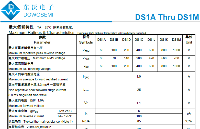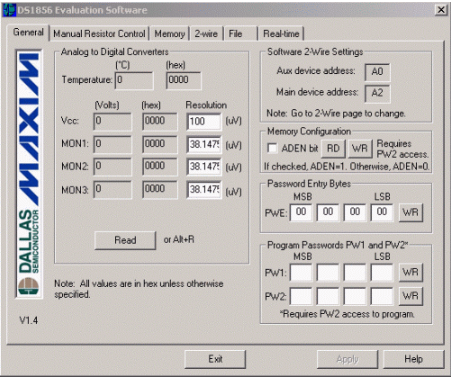DS3984/DS3988 Transformer Turns Ratio Selection
Abstract: The DS3984 and DS3988 are multi-channel Cold-Cathode Fluorescent Lamp (CCFL) controllers. The key variable in designing an optimal system with the DS3984 and DS3988 is the selection of the transformer turns ratio. This application note describes how the transformer turns ratio varies with different CCFL lamps and DC supply voltages and it provides a quick look-up table to help the user quickly select a transformer turns ratio that will work well in their design.
The DS3984 and DS3988 are multi-channel Cold-Cathode Fluorescent Lamp (CCFL) controllers. These controllers use a push-pull drive to convert a DC supply voltage to the high-voltage AC waveform that is required to power the CCFL lamps. Figure 1 details this arrangement.

Figure 1. DS3984 / DS3988 CCFL drive schematic.
Each channel of the controller drives two logic-level N-channel MOSFETs that are tied between the ends of a step-up transformer and ground. The transformer has a center tap on the primary that is connected to the DC supply. The controller alternately turns on the two MOSFETs to create the high voltage AC waveform on the secondary.
The key variable in designing a push-pull drive scheme is selecting the turns ratio for the transformer. At a given regulated lamp operating current, the transformer turns ratio is directly proportional to the CCFL lamp voltage and inversely proportional to the DC supply voltage as shown in the equation below.
For a given DC supply voltage, higher operating voltage CCFL lamps require a higher transformer turns ratio. For a particular CCFL lamp, a higher DC supply voltage will require a lower transformer turns ratio. The operating voltage of CCFL lamps varies, based on a number of factors including lamp diameter and length. Lamps with smaller diameters and longer lengths operate at higher voltages.
There is not an exact formula for calculating the transformer turns ratio. Table 1 lists some empirically derived transformer turns ratio for a variety of CCFL lamps. As can be seen from the table, the transformer turns ratio decreases as the DC supply voltage increases, and the transformer turns ratio decreases as the operating voltage of the CCFL lamps decreases.
Table 1. Target Transformer Turns Ratios for Various CCFL Lamps
| Nominal DC Supply Voltage2 |
Lamp 1 2.4mm x 438mm 830 ~ 890 Vrms1 |
Lamp 2 2.2mm x 258mm 540 ~ 600 Vrms1 |
Lamp 3 2.0mm x 218mm 440 ~ 490 Vrms1 |
| 5V | 80:1 | 70:1 | 65:1 |
| 6V | 75:1 | 65:1 | 60:1 |
| 7V | 70:1 | 60:1 | 55:1 |
| 8V | 65:1 | 65:1 | 50:1 |
| 9V | 60:1 | 50:1 | 45:1 |
| 10V | 55:1 | 45:1 | 40:1 |
| 11V | 50:1 | 40:1 | 36:1 |
| 12V | 45:1 | 36:1 | 32:1 |
| 13V | 40:1 | 32:1 | 30:1 |
| 14V | 38:1 | 30:1 | 28:1 |
| 15V | 36:1 | 28:1 | 26:1 |
| 16V | 34:1 | 26:1 | 25:1 |
| 17V | 32:1 | 25:1 | 24:1 |
| 18V | 30:1 | 24:1 | 23:1 |
| 19V | 29:1 | 23:1 | 22:1 |
| 20V | 28:1 | 22:1 | 21:1 |
| 21V | 27:1 | 21:1 | 20:1 |
| 22V | 26:1 | 20:1 | 19:1 |
| 23V | 25:1 | 19:1 | 18:1 |
| 24V | 24:1 | 18:1 | 17:1 |
Notes: 1. Lamp operating voltage at 5mArms operating current.
2. Assumes ±10% supply variation.
Users can select the proper turns ratio by using Table 1 as a guide. For example, to select the transformer turns ratio to drive a CCFL lamp with a nominal operating voltage of 800V with a 24V supply, first use Table 1 to locate the target transformer turns ratio for a comparable lamp. The 2.4mm x 438mm lamp listed in Table 1 most closely matches the target lamp so a target 24:1 turns ratio would be selected. The actual turns ratio can vary by ±15% since the controller will automatically adjust to match the lamp.
Design Hint: When estimating the transformer turns ratio, it is always advisable to keep the turns ratio slightly high. The controller can make adjustments for a transformer turns ratio that is slightly too high by reducing the MOSFET duty cycle but a transformer turns ratio that is too low may not allow the lamp to strike.
Once a transformer turns ratio is selected, it should be tested with the target lamp over the operating DC supply voltage range and temperature range. The resulting nominal duty cycles at the MOSFET gate driver pins (GA and GB) should be measured. A well matched lamp to transformer design will result in duty cycles in the 25% to 35% range.
Definition: Transformer Turns Ratio
This application note defines the transformer turns ratio as the number of secondary turns divided by the sum of the two primary turns. For example, a 50:1 transformer may have 2100 secondary turns with two primary windings of 21 turns each [2100/(21+21) = 50].
In addition to the transformer turns ratio, there are a number of other important transformer specifications that are listed in Table 2. See the DS3984 and DS3988 data sheets for more details.
Table 2. Key Transformer Specifications
| Parameter | Test Condition | Min | Typ | Max | Unit |
| Frequency | 40 | 80 | Khz | ||
| Output Power | 6 | W | |||
| Output Current | 5 | 8 | mArms | ||
| Primary DCR | center tap to one end | 200 | mohms | ||
| Secondary DCR | 500 | ohms | |||
| Primary Leakage | 12 | µH | |||
| Secondary Leakage | 185 | mH | |||
| Primary Inductance | 70 | µH | |||
| Secondary Inductance | 500 | mH | |||
| Secondary Output Voltage | 100ms minimum | 2000 | Vrms | ||
| Secondary Output Voltage | continuous | 1000 | Vrms |
| DS3881 | 单通道、汽车CCFL控制器 |
| DS3882 | 双通道、汽车CCFL控制器 |
| DS3984 | 4通道冷阴极荧光灯控制器 |
| DS3988 | 8通道冷阴极荧光灯控制器 |
| DS3992 | 双通道、推挽式CCFL控制器 |
| DS3994 | 4通道冷阴极荧光灯控制器 |
 电子发烧友App
电子发烧友App

























评论